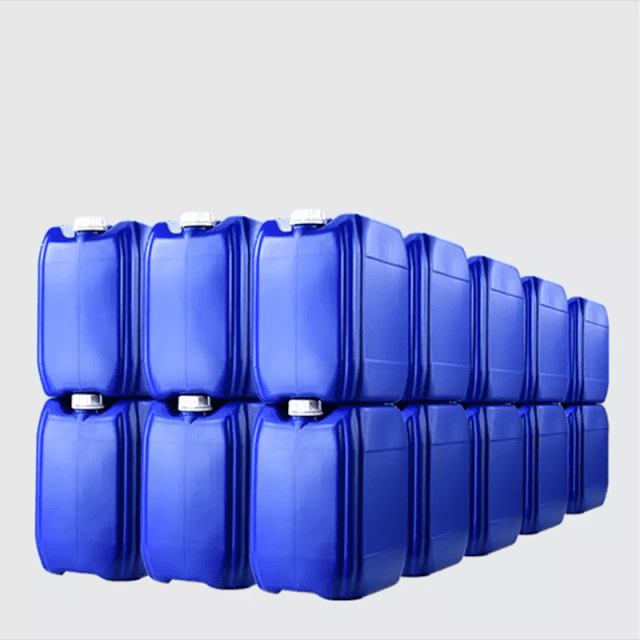Heat stabiliser is one of the main indispensable additives for PVC processing, PVC heat stabiliser is used in small quantities, but its role is huge. The use of heat stabilisers in PVC processing can ensure that PVC is not easily degraded and is more stable. Below to understand the types of pvc heat stabiliser.
Lead salt stabiliser
Lead salt stabilizers [7] can be divided into three categories: (1) simple lead salt stabilizers, mostly salt-based salt containing PbO; (2) heat stabilizers with lubrication, mainly fatty acids, neutral and salt-based salt; (3) composite lead salt stabilizers, as well as solid and liquid composite stabilizers containing a synergistic mixture of lead salts and other stabilizers and components.
Lead salt stabiliser heat stabilising effect is stronger, has good dielectric properties, and low prices, and lubricants can be reasonably proportional to make the PVC resin processing temperature range becomes wider, processing and post-processing product quality is stable, is currently the most commonly used stabilizers. Lead salt stabilisers are mainly used in hard products. Lead salt stabilisers have the characteristics of good heat stabiliser, excellent electrical properties and low price. However, lead salts are toxic and cannot be used in food contact products, nor can they produce transparent products, and they are easily contaminated by sulphide to produce black lead sulphide.


Metal soap stabilisers
Stearic acid soap heat stabilisers are generally alkaline earth metals (calcium, cadmium, zinc, barium, etc.) and stearic acid, lauric acid and other saponification. There are many types of products, each with its own characteristics. Generally speaking, lubricating stearic acid is better than lauric acid, and compatibility with PVC lauric acid is better than stearic acid.
Metal soap can absorb HCl, some varieties can also through the catalytic effect of its metal ions to the fatty acid root to replace the active part of the Cl atom, so can play a different degree of heat stabilisation of PVC. PVC industry is rarely a single metal soap compounds, but usually several metal soap complex. The common ones are calcium and zinc soap stabilisers. According to the Frye-horst mechanism, calcium / zinc complex stabiliser stabilisation mechanism can be considered: first zinc soap and PVC chain reaction of allyl chloride, and then calcium soap, zinc soap and chlorine chloride reaction to generate unstable metal chloride. At this time, as an intermediate medium of the auxiliary stabiliser and then transfer chlorine atoms to the calcium soap to regenerate the zinc soap, delaying the generation of zinc chloride with the role of promoting the dehydrogen chloride.
Calcium and zinc stabilizers can be used as non-toxic stabilizers in food packaging and medical devices, pharmaceutical packaging, but its stability is relatively low, calcium stabilizers use large amounts of poor transparency, easy to spray frost. Calcium-zinc stabilisers generally use polyols and antioxidants to improve their performance, the country has been used for rigid pipe transparent calcium-zinc composite stabilizers appeared.
Organic tin stabilisers
Organic tin in the alkyl tin is usually methyl, n-butyl, n-octyl and other three. Most of the Japanese production is butyltin, Europe, octyltin more common, which is the standard non-toxic stabilisers recognised in Europe, the United States, the use of methyltin more. Commonly used organotin stabilizers have three major categories: (1) aliphatic acid salts, mainly refers to dibutyltin dilaurate, dibutyltin dilaurate, etc.; (2) maleic acid salts, mainly refers to dibutyltin maleate, bis (monobutyl maleate) dibutyltin, dibutyltin maleate, etc.; (3) thiol salts, of which the bis (sulphur carboxylic acid) ester is the most dosage.
Organotin heat stabilizers have better performance, is used for PVC hard products and transparent products of the better varieties, especially octyltin almost indispensable stabilizer for non-toxic packaging products, but its price is more expensive.
Organic tin heat stabiliser (tin thioglycolate) has a good stabilising effect on PVC. Especially the liquid organotin stabilisers, compared with the solid heat stabilisers, the liquid organotin stabilisers can mix better with the PVC resin. The organotin stabilizer (tin mercaptoacetate) can replace the unstable Cl atom on the polymer, which gives PVC resin long-term stability and initial colour retention. The stabilising mechanism of tin mercaptoacetate is also proposed: (1) S atoms can replace the unstable Cl atoms, thus inhibiting the generation of conjugated polyolefins. (2) HCl, as a product of thermal degradation of PVC, can accelerate the generation of conjugated polyolefins. And tin mercaptoacetate can absorb the generated HCl.
Rare earth stabilisers
Rare earth heat stabilizers mainly include resource-rich light rare earth lanthanum, cerium, neodymium organic weak acid salts and inorganic salts. The types of organic weak acid salts are stearic acid rare earth, fatty acid rare earth, salicylic acid rare earth, citric acid rare earth, lauric acid rare earth, octanoic acid rare earth and so on.
Rare earth stabilizers for the preliminary study of the mechanism: (1) rare earth lanthanides special electronic structure (the outermost layer of 2 electrons, the second outer layer of 8 electron structure, there are
Translated with DeepL.com (free version)
Recommended Related Reading:
Dabco NE1060/Non-emissive polyurethane catalyst


Comments